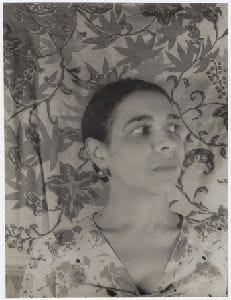Rookie Season: Debuts
Extra seasoning for your everyday food for thought
Genre: Fictional Autobiography, Coming-of-Age
“Harmony, radiance, and simplicity, all the essentials of spiritual beauty in the race they had marked for destruction.”
— Nella Larsen
Back Cover (Dover Publications):
“Helga’s mother is white, and her father is Black—and absent. Ostracized throughout her lonely childhood for her dark skin, Helga spends her adult life seeking acceptance. Everywhere she goes—the American South, Harlem, even Denmark—she feels oppressed. Socially, economically, and psychologically, Helga struggles against the ‘quicksand’ of classism, racism, and sexism.”
Quicksand, the 1928 debut novel by American author Nella Larsen1, is a work that “explores both cross-cultural and interracial themes, containing intriguing parallels from the author’s own personal life.”
The most autobiographical of Larsen’s two published novels, Quicksand tells the story of a young biracial woman who sets out on a mission to find people she feels she most belongs.
Born Nellallitea Walker (April 13, 1891), Nella Larsen Imes was married to renowned physicist Elmer Samuel Imes (the second African-American to earn a PhD in physics) when Quicksand was first published in 1928, earning her a second prize for literature from the Harmon Foundation (an award that included a commemorative medal and a cash prize of $100 - worth roughly $1,775 in 2024 dollars)2
(The Harmon Foundation, which existed from 1922 to 1967, is remembered as one of the first major supporters of African-American ingenuity, recognizing African-American artists who otherwise would have remained largely unknown.)3

W.E.B. Du Bois once named Quicksand, “the best piece of fiction that Negro America has produced since the heyday of Chesnutt,” while Alice Walker praised both Quicksand and Passing as, “novels I will never forget. They opened up a whole world of experience and struggle that seemed to me, when I first read them years ago, absolutely absorbing, fascinating, and indispensable.”4
“Life wasn’t a miracle, a wonder. It was, for Negroes at least, only great disappointment. Something to be got through with as best one could.”
– Nella Narsen, Quicksand
Did You Know?
Did you know that first editions of Nella Larsen’s works are rare, as she mysteriously disappeared from Harlem’s literary and arts community after publishing two successful novels and becoming the first African-American woman to win a Guggenheim Fellowship in 1930?5

Tell Me More . . .
Nella Larsen received her Guggenheim Fellowship in 1930.
As noted by the Foundation’s literature, “The purpose is to provide Fellows with blocks of time in which they can work with as much creative freedom as possible. As such, grants are made freely, without any special conditions attached to them; Fellows may spend their grant funds in any manner they deem necessary to their work.”
Larsen used her grant funds (a cash prize of $2,500 - worth roughly $45,500 in 2024 dollars) to travel to Europe for several years with the intent of working on her third novel, centered around a love triangle.
Unfortunately, she went through a sequence of heartbreaks during this period of her life, including: accusations of plagiarism (of her 1930 published short-story “Sanctuary”), an inability to find a publisher for her third novel, strains in her marriage (given reports of Imes’s infidelity), and the couple’s ultimate divorce—followed shortly thereafter by Imes’s untimely death.
Struggling with depression, Larsen stopped writing, returned to her previous career in nursing, moved to the Lower East Side and completely vanished from Harlem—never to be found or seen in the literary community again.
Some Food For Thought:
Having cut ties to Harlem’s literary circle, and with no connection to living relatives, Larsen had created the conditions necessary to silently fade into history. In fact, a few of Larsen’s acquaintances speculated that she, like some of the characters in her works, may have chosen to pass.6
Other biographers posit that as a divorcee in the 1940s, she may have had no choice but to return to nursing in order to support herself financially.
In a letter to Carl Van Vechten, one of her close, personal friends, Larsen referred to the more heart-wrenching episodes of her novels as, “the awful truth” as she struggled with finding a sense of belonging between the worlds of her Danish mother and Afro-Caribbean father.
However, whatever truth remains, Nella Larsen’s legacy will never fade from Black history as she was an unquestioned, premier writer forever associated with the Harlem Renaissance.

Rookie Season: Debuts
A STEM Grew Petals Newsletter
Next issue is Louise Meriwether - Daddy Was A Number Runner:
Want Daily Quotes?
Follow on Instagram (at Captioned Black Art)
Made in Silicon Valley (with love) by author Jafari Joseph.
Copyright (C) 2024 My STEM Grew Petals Publishing. All rights reserved.
STEM Grew Petals is a reader-supported publication. To receive new posts and support my work, consider becoming a free or paid subscriber.




